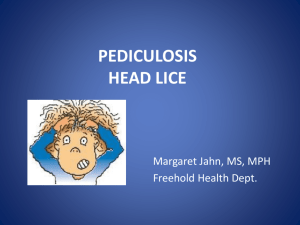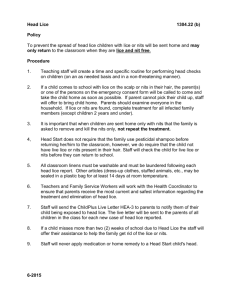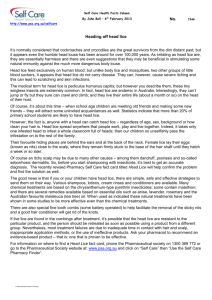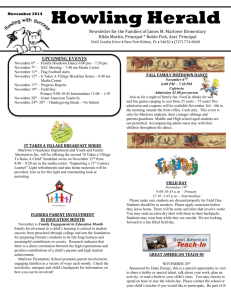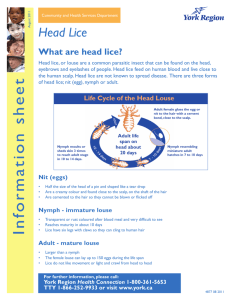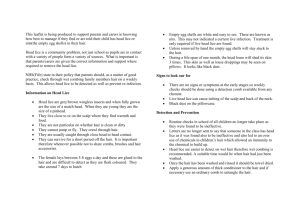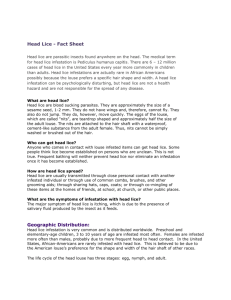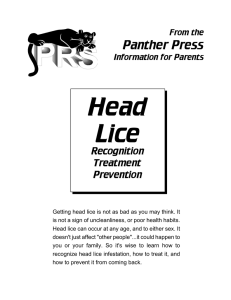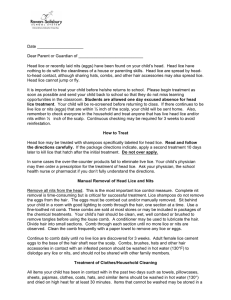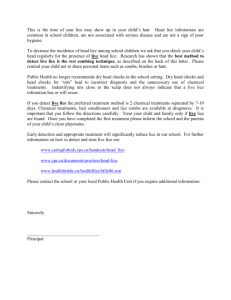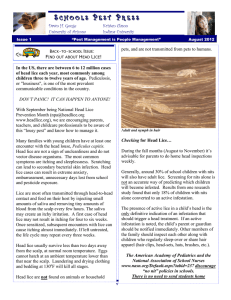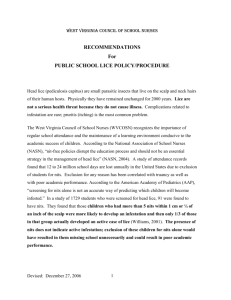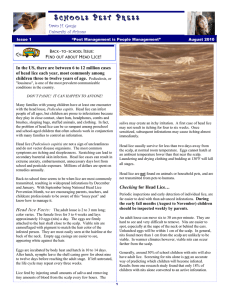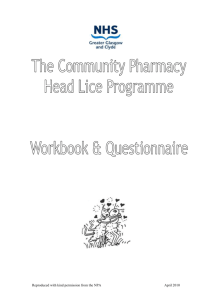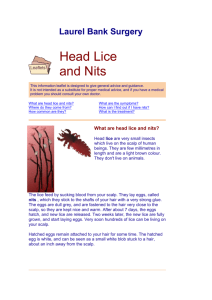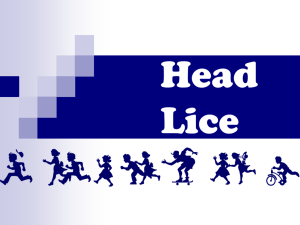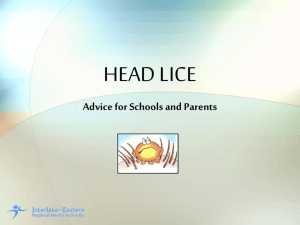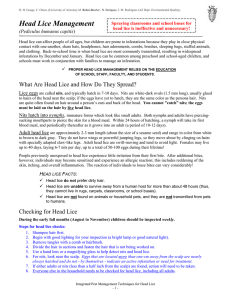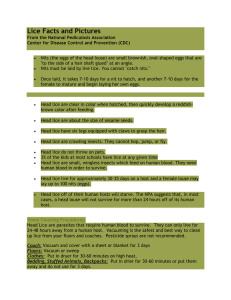Lice - All Star Pediatrics
advertisement
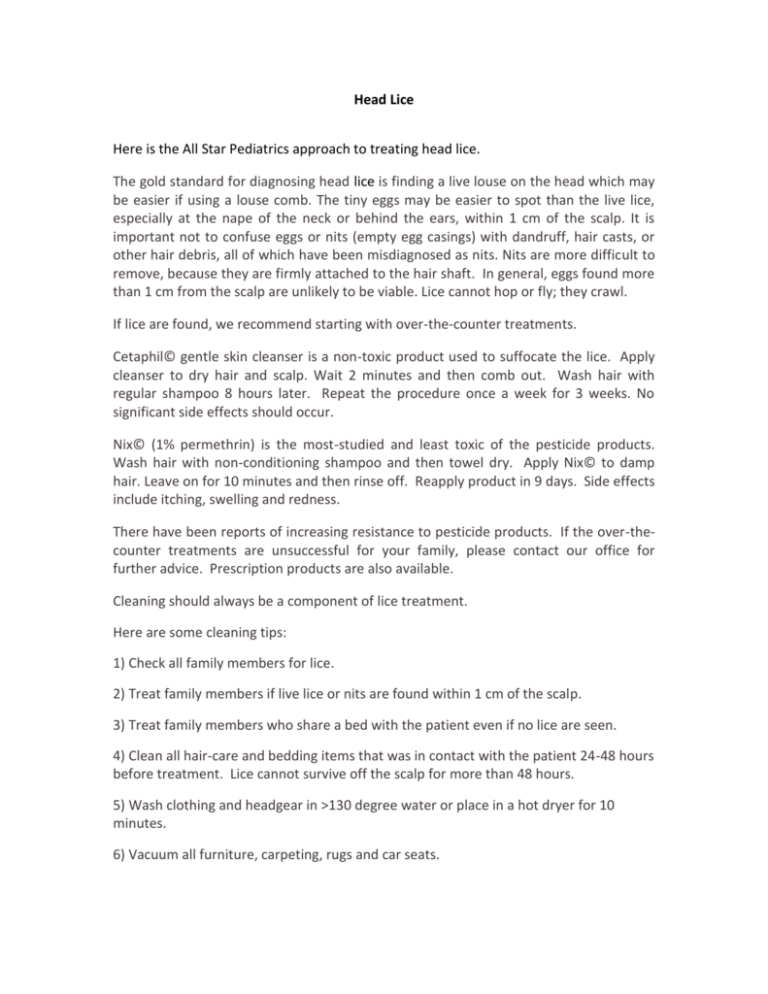
Head Lice Here is the All Star Pediatrics approach to treating head lice. The gold standard for diagnosing head lice is finding a live louse on the head which may be easier if using a louse comb. The tiny eggs may be easier to spot than the live lice, especially at the nape of the neck or behind the ears, within 1 cm of the scalp. It is important not to confuse eggs or nits (empty egg casings) with dandruff, hair casts, or other hair debris, all of which have been misdiagnosed as nits. Nits are more difficult to remove, because they are firmly attached to the hair shaft. In general, eggs found more than 1 cm from the scalp are unlikely to be viable. Lice cannot hop or fly; they crawl. If lice are found, we recommend starting with over-the-counter treatments. Cetaphil© gentle skin cleanser is a non-toxic product used to suffocate the lice. Apply cleanser to dry hair and scalp. Wait 2 minutes and then comb out. Wash hair with regular shampoo 8 hours later. Repeat the procedure once a week for 3 weeks. No significant side effects should occur. Nix© (1% permethrin) is the most-studied and least toxic of the pesticide products. Wash hair with non-conditioning shampoo and then towel dry. Apply Nix© to damp hair. Leave on for 10 minutes and then rinse off. Reapply product in 9 days. Side effects include itching, swelling and redness. There have been reports of increasing resistance to pesticide products. If the over-thecounter treatments are unsuccessful for your family, please contact our office for further advice. Prescription products are also available. Cleaning should always be a component of lice treatment. Here are some cleaning tips: 1) Check all family members for lice. 2) Treat family members if live lice or nits are found within 1 cm of the scalp. 3) Treat family members who share a bed with the patient even if no lice are seen. 4) Clean all hair-care and bedding items that was in contact with the patient 24-48 hours before treatment. Lice cannot survive off the scalp for more than 48 hours. 5) Wash clothing and headgear in >130 degree water or place in a hot dryer for 10 minutes. 6) Vacuum all furniture, carpeting, rugs and car seats. 7) Run combs, brushes, barrettes, etc. through the dishwasher or place in rubbing alcohol for 10 minutes. 8) To be extra cautious, you may bag items that cannot be washed in plastic for 2 weeks. 9) Herculean cleaning efforts are not required!! As always, the All Star Pediatrics nurses are available to answer any questions or concerns you might have. Good luck! Adapted from the Head Lice Clinical Report from the American Academy of Pediatrics August 2010 and Dr. Albert Yan’s presentation from the Hawaii Dermatology Seminar 2011.



